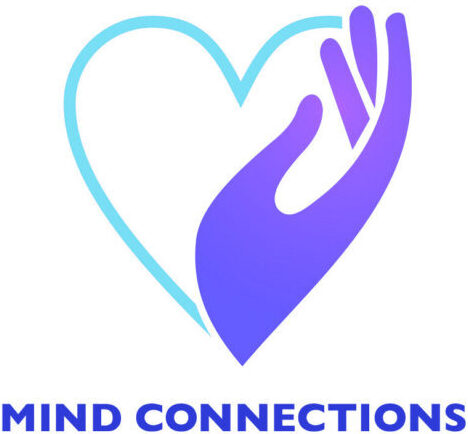How To Practice Gratitude In Daily Life
When life gets tough, it may feel like there is nothing to have gratitude for in your life. This negativity and pessimism may make it hard to notice any positive factors in your life. When you go through hard times, it may be easier to succumb to negative thinking. For instance, you can get so wrapped up in focusing on what you do not have, and forget to appreciate all the things you do possess. Therefore, turning to gratitude can help to recognize more of the good in your world.
Gratitude is a feeling of appreciation and thankfulness for what you have in your life. You can have gratitude for anyone or anything, such as people, animals, a religious entity, the universe, nature, etc. Expressing gratitude can help to increase feelings of positivity and happiness. When you feel fulfillment and appreciation, you can start to look at the world differently. Whether your gratitude is for big opportunities or a tasty dinner, life is full of things that you can give thanks for. Therefore, it is up to you to spot these precious moments and gifts from life.
Why is Gratitude Important?
To better answer this question, we rely on research. Studies have shown how effective gratitude is in aiding people’s overall well-being. Gratitude practices can benefit people of all ages and in all different areas of people’s lives.
Gratitude in Adolescents
Not surprisingly, gratitude can be useful for any age group. In particular, research has shown that gratitude practices can help to regulate adolescents’ emotions, help in alleviating problem behaviors, and enhance positivity. Overall, these studies suggest that being grateful can help adolescents to access more positive coping mechanisms in stressful situations. By channeling less negative ways of reacting to stressors, the child can access greater feelings of calmness.
Gratitude can also serve as a protective factor in adolescents. As we all know, bullying has horrible effects on victims’ wellbeing and mental health. In other words, bullying can increase feelings of depression and suicidal ideation in adolescents. Studies have found that gratitude can act as a protective factor for adolescent girls who experience bullying – expressing gratitude helped these youth to decrease suicide risk.
Gratefulness in Organizational Systems and Work
As we enter our young adult and adult stages, work starts to consume a big chunk of our lives. Without a doubt, professional responsibilities can be challenging. If work stress goes unaddressed, it can increase feelings of depression and anxiety in employees. Expressing feelings of appreciation in your work setting can help not only your well-being but the overall wellness of the staff. According to a study Di Fabio et al., gratitude enhances prosocial relationships in the office. Specifically, when a manager expresses gratitude towards his staff, this has a positive effect on the entire work environment.
Gratitude and Envy
It goes without saying, envy can be a difficult emotion to navigate. No one likes feeling jealous. After all, envy can make us compare ourselves to others, look down on our attributes, and harbor ill-will towards the objects of our envy. Research by Xiang et al. looked at gratitude’s effect on two types of envy, that is, benign envy and malicious envy. Benign envy makes us want to improve ourselves; whereas malicious envy promotes negative feelings in us and towards the person we are jealous of. The results found that a person with higher levels of gratefulness would experience more benign envy and feel higher social support.
Gratitude and Happiness/Positivity
Gratefulness can promote feelings of positivity in people’s lives. When people with high levels of gratitude reflect on the past, they were found to experience greater satisfaction and fulfillment in life. Besides, research has shown that gratitude can not only prompt feelings of happiness but help to lower depressive emotions.
Ways to Practice Gratitude in your Life
If you start practicing gratitude, it can be a great way to improve your days and overall wellness. Check out these simple and easy ways to promote this appreciation in your daily routine.
Gratitude Journaling
Gratitude journaling is a great way to practice gratefulness in your life. Simply find somewhere comfortable to write, get a piece of paper or journal, and list a few things that you feel appreciation for in the past week. Whenever time allows, you can do this journaling exercise, but doing it once or twice a week is more beneficial.
When you first start journaling, it may be hard to think of what to write down, especially if you are feeling very discouraged about your current situation. You may hear this, “Find gratitude in all parts of your life? But how?” The trick is to appreciate the things that may seem small, or you may not even initially think of.
1. Remember the Basics
First and foremost, remember the basics. This could include simple things in life, such as gratitude for waking up and starting a new day, for your body carrying you through life, and for the ability to take the time to write this list. After all, when you cry for new shoes, remember some people do not even have feet.
2. People in Your Life
Another important trick is, to think of the people in your life. It could be a coworker you shared a laugh one morning, or could be a friend whose text made you smile. As mentioned before, gratitude can come from animals or spiritual connections/beliefs. Therefore, you can show gratitude for seeing a cute dog on the street, or for a religious/spiritual experience you’ve encountered or taken part in. Your gratitude list can include anything you want!
3. Mental Subtraction
Still difficult to find gratitude? Another way to increase this sentiment is to engage in “mental subtraction.” Simply put, imagine what your life would be like if some positive event had not occurred. For example, an educational achievement, the birth of a child, a special trip, or the pet you adopted. Now consider this event may never have happened. If you hadn’t enjoyed this positive event, can you imagine what your life would be like? Hope you understand better what you feel grateful for.
Gratitude journaling can help you focus on the positive aspects of your life. The beauty of this exercise? It is easy and fast. Simply look at your list and visualize what you are grateful for. Practice it anywhere and anytime! Even better, look back on all the lists you have made over time. This accumulation of gratitude can help to improve your mood and optimism in stressful or unhappy times.
Sticky Notes – Words of Gratitude
Ever want to take your gratitude lists one step further? Put them on Post-Its or little pieces of paper. Stick them on your wall, mirrors, lockers, or any space you look to. These papers can act as friendly reminders of what you are appreciative for. For example, post a list on your mirror that says, “I am grateful for my curly hair, my imperfectly-perfect skin, and my beautiful body.” It will remind you of the wonderful qualities you have when looking at yourself.
Gratitude Letters
Another exercise to promote appreciation in your life is writing a gratitude letter. What can you write then? Tell someone how meaningful they are or what positive impact their actions have had on you. This exercise can promote feelings of gratitude in you, and also make someone else’s day brighter. Want to make it even more meaningful? Use cute stationery, stickers, colorful pens, etc.
Gratitude Practices in Daily Life
As you can see, there is so much to be grateful for when you open your eyes and take a look at the world around you. So next time when you feel down, try to admire the simple pleasures of the day.
If you find it hard to set time aside for journaling or writing, a great way to practice gratitude is to give thanks before each meal. Before eating, you can remind yourself to be thankful for, such as, having food to eat, the people who prepared the food, the animals that provided the products you are eating, and the earth for growing the food.
Our therapists at Mind Connections can help you to tackle the difficulties you face in mental health, probably find the way to better appreciate yourself and what you have in your life. Give us a call for 15 minutes free. We will be more than happy to assist you in your journey.
Good luck on your gratitude journey! By all means, look at each day as another chance to give thanks to the world and the people in it. Remember how important you are. Appreciate yourself for making someone’s life better just by being in it! Do good in the world and spread as much joy as you can. By doing so you may even appear on someone’s gratitude list or in their gratitude letter! Wouldn’t that be wonderful?!
Content Creator, Victoria Gallo; Reviewed by Dr. June Cao





Wow that was strange. I just wrote an incredibly long comment but after I
clicked submit my comment didn’t appear. Grrrr… well I’m not writing all that over again. Anyhow,
just wanted to say great blog!
To love unconditionally is to love the way your Wise Self or whatever you call